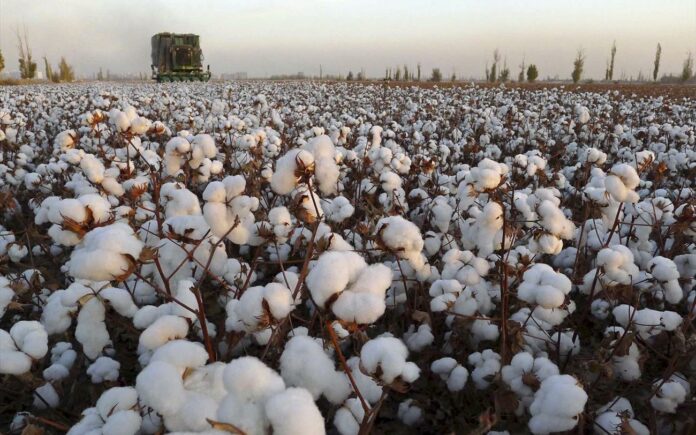“Cotton is a product of strategic importance for the country, as it has been produced industrially and professionally since the end of the 19th century. Therefore, Greece has a very long tradition. It is consistently among the 10 most exportable products of the country and among the 3 most exportable agricultural products,” Antonios Siarkos, president of the European Cotton Alliance, said in an interview with Naftemporiki TV channel.
Speaking of the country’s “white gold”, he said that the sector’s turnover reaches 1 billion euros, while over the last 15 years, production has stabilized around 330,000 tons of refined grains.
“In Greece, about 2.5 million stremmas are cultivated, which is about 10% of the country’s cultivated land, by far the largest crop in the country,” Siarkos underlined.
This year, however, due to weather phenomena and especially storm Daniel, a decrease of around 40% has been recorded compared to the historical average that has been achieved over the years.
“Our production marginally exceeds 200,000 with the center of cotton cultivation being Thessaly. It’s a big blow, after what happened last summer with storm Daniel. It essentially happened just before the product was harvested, leaving businesses exposed,” he noted.
“The industry is 90-95% export oriented. Greece is the leader in the EU, it represents 80% of European production and is a very important country in terms of international export trade. It is among the 7 largest exporters in the world (with the US first and Brazil second). We have giants to compete with. Obviously, this has to do with the very high quality of the product we produce and the great know-how we have developed, but also with the special climatic and soil conditions. A lot of money has been invested by both companies and producers over the years and a very important know-how has been developed”…”Cotton is the premier textile natural fiber. The main competition of cotton comes mainly from synthetic fibers and polyesters which in recent years have seen a boom. At the moment we are experiencing a trend towards natural textile fibers… More specifically, consumer sensitivity for products with a high environmental and social responsibility has significantly increased. By extension, this has led the fashion industry to the need to look for ways to produce textile products,” he also pointed out.














